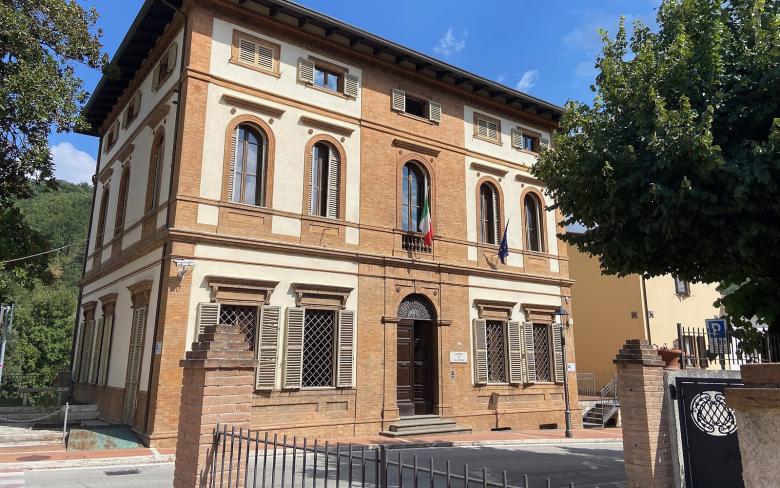The underlying Casa Coccia built-up area constituted the village.
In the early fourteenth century, the fortress came under the domination of the Trinci nobles of Foligno. In 1338 Conrad was Lord, while we are told that in 1383, Conrad II confirmed Ser Bartolomeo of Ser Angelo da Giano, as vicar of Valtopina, Stazzano and Balciano. In 1392 Ugolino III became aspostolic vicar, and in 1395 Pope Boniface De granted the castle with the title of Count Giacomo Paolo Boscari from Foligno, who continued to hold domain until 1435 even if in the meantime, Pope Eugene IV reconfirmed the apostolic vicariate of Corrado III Trinci for the symbolic tribute (it was said) of a falcon, a net and a hunting dog. It was under Corrado Trinci, on 15 August 1434, that the 'Universitas Vallis Tupini et Villae Balciani', gave the Statutes.
After 1439, with the fall of the Trinci, Poggio began to elect its directors. This behavior gave rise to violent reactions caming from Foligno inhabitants who claimed possession, so that the same board was forced to seek the protection of the neighboring communities. On this occasion Perugia citizens also joined in, and taking advantage of the situation, they tried by all means to take control, but succeedied only in 1495. That same year, in addition to Poggio, Serra and Pasano were also subject to Perugia, as well as Gallano castles. In 1560 upon the appointment of Pope Pius IV, the castle was given to Caesar and Octavian Bentivoglio, counts of Gubbio, who were its lords until 1616.
After that date they were replaced by a mayor. In the following years, there are only fragmentary reports about the castle, but it’s known that it was used as the municipal building until 1867, when the administration was moved permanently to Valtopina, with the opening of the railway station.





























.png/1466f1b0-6b0b-66c3-d028-c44e27836a4a?width=780)


